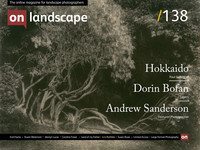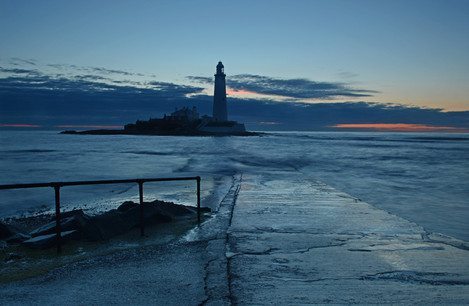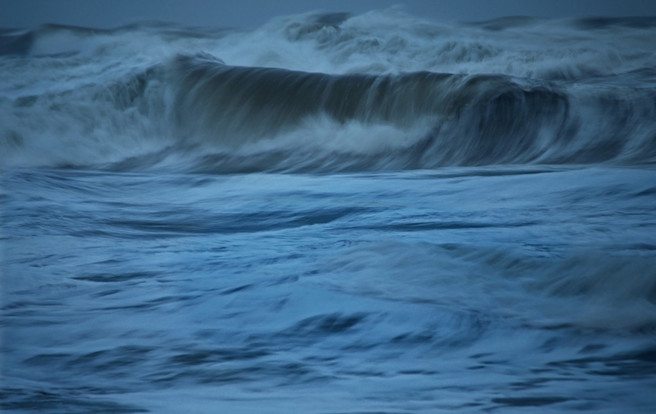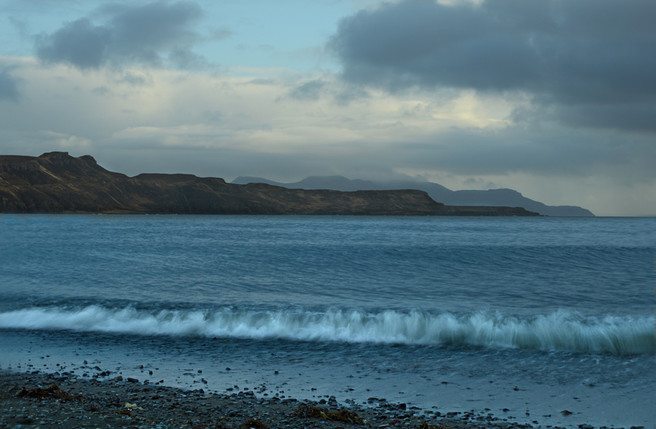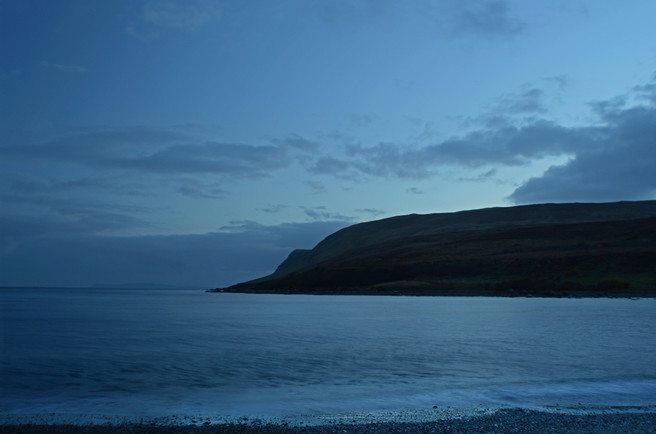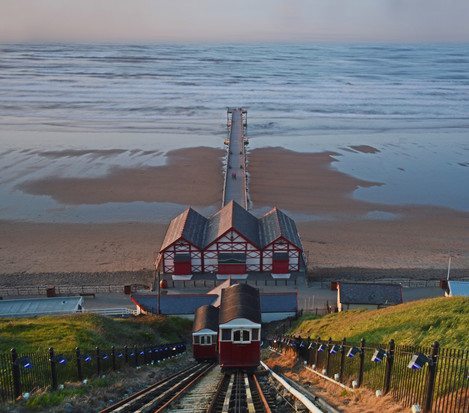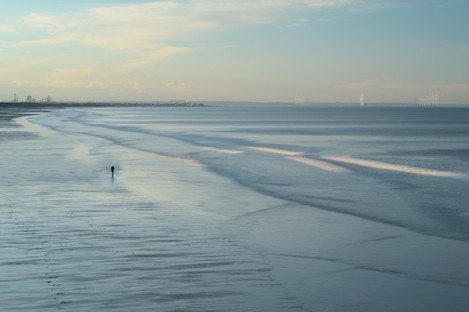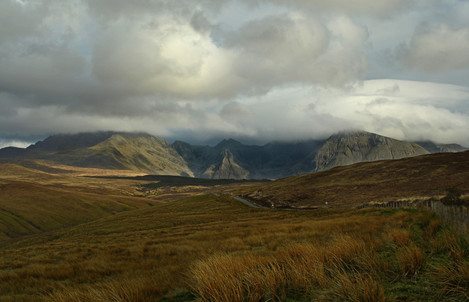Unlimited Enthusiasm

Susan Rowe
Susan Rowe is a landscape photographer from County Durham and, since being retired has had more time for taking photos, further developing a personal style and extending her photographic skills. However, she is disabled; sometimes using sticks but, more usually a wheelchair and therefore, one of the big challenges is to find suitable locations for her to access and take photos.
susanrowelandscapephotography.co.uk
I’m Susan Rowe, a disabled landscape photographer from County Durham. Last year I had a series of exhibitions at local galleries and had to decide on a title for the work I was displaying. I wanted to convey something about me as well as the challenges I face when out taking photos, hence “Limited Access”.
Landscape photography and being disabled may not appear to be obvious companions, especially as I only took up photography in 2008 when it became impossible for me to walk any distance due to severe osteoarthritis. I was inspired by greetings cards and calendars by Joe Cornish and Colin Prior, thinking I could take images like that! However, as a geographer and walker, I have a longstanding affinity with hills, mountains, lakes and the sea, and photography seemed a good way to keep in touch with the places I enjoy. And, it has given me the motivation to try and create images that reflect my passion for these landscapes that have been such an important part of my life.
Having never owned a DSLR before, I not only had the challenge of learning how to use the camera but also, finding suitable locations, something I hadn’t initially thought about. I envisaged getting out into the countryside and just taking photos. I bought a Nikon D60 because it was one of the lightest cameras at the time and, an entry level one; something
When I first started I bought a set of ND grads and a polariser and these have become an essential part of the equipment I use. The camera came with a standard 18-55mm lens and, I also have a Nikkor 55-200mm and Sigma 10-20mm lenses. Photographs at first were straight forward record shots of the places I visited and it wasn’t until 2011 that I began to take things more seriously and look to develop new techniques and skills. Since retiring in 2014 I’ve had more opportunity to get out with the camera but know I’m still very much at the learning stage of my photography. I always have the camera set to manual and now have a Nikon D3200 which is an updated version of the original one. I bought this because I didn’t have to learn too many new things about the camera and, it does the things I want (teach an old dog new tricks?).
I was once told that my images had no vision, no composition, I didn’t consider the rule of thirds, no lead in lines and, wasn’t producing anything that was unique. This spurred me on and made me determined to prove to myself, not to the detractors, that I actually could produce images that were technically sound but, more importantly, ones that I was happy with and enjoyed viewing. Something that was a reflection of me, the person I am.
I joined the Royal Photographic Society and the Disabled Photographers Society and, have successfully been awarded a Licentiateship by both organisations. This has given me the confidence to move forward and explore and experiment. I like to try different shutter speeds and use a polariser, a 5 stop or 10 stop filter and ND grad for this. Whatever the time of day, I still use these filters and see what the resultant effect is.
Being able to get out and do something that I’m physically capable of is extremely satisfying, even if it means sitting in the wheelchair. Since I first started taking photos my mobility has deteriorated quite significantly and, writing this article, made me ponder on whether my photography has changed in any particular way.
A favourite place to stop was a layby alongside Ullswater where I could climb down a few steps to the water but, not anymore. Here I enjoyed walking along the shoreline, amongst the trees and looking across to Sandwick. I like to stop part way down the Honister Pass and take close ups of the stream rushing down to Buttermere. I used to be able to stand and take shots of the rocks and clear water but now, it can be a very hit and miss affair as I find myself toppling over without the support of my sticks. Logistically everything has to be straightforward and easy and, by that, I mean I can’t roam up and down the side of the stream looking to take images, I have to be able to sit somewhere close to the car. If I can do that then there is a good chance of using the zoom lens and taking photos. Some photographers love experimenting with ICM but for me, it is usually UCM; unintentional camera movement. I have a trapped nerve in my left hand, as well as the arthritis in both, so trying to hand hold the camera depends very much on how I am feeling at any particular moment. Even sitting down doesn’t mean a steady hand! Yes, I could use the tripod but the sense of freedom with the camera is then disappointingly lost. However, would it matter if the blurred image is unintentional?
I really enjoy the time before sunrise and after sunset; twilight. The mood of the landscape is changed as definition and detail are disguised. Patterns and shapes emerge, sometimes giving a very abstract feel. I
Using a wheelchair, it is important to have somewhere easy to park and a reasonably flat surface to wheel over. I’m fortunate to live close to the coast of North East England. Here, both the promenade and pier at Saltburn and also Roker, Sunderland, provide excellent locations, as well as the approach to St. Mary’s Lighthouse, Whitley Bay. At all these places there are seats which means I can get out of the wheelchair and have more flexibility in where I place the tripod. Many coastal resorts have a marina and/or harbour which can offer good photographic opportunities for those in wheelchairs. The problem though often comes with being able to park and then wheeling to the location.
Like most photographers, I spend time in preparation and, for a visit to the coast, I not only look at the weather app on my phone but also the website of magicseaweed which provides information on tide times as well as first light and last light. Searching local authority websites for public toilets is a must and having a RADAR key for access to disabled facilities can be a life saver! A blue badge is another essential at times.
As well as suffering limited mobility, I’m also visually challenged with a cataract and being long sighted. I know some photographers say they aim to only take one image when out on a shoot, well, I couldn’t manage that as I’m unable to see the camera display clearly, even with my glasses on. Thank goodness for digital cameras and the ability to take lots of images. It is only on the laptop screen that I can properly see the results. Another confession is that I only shoot in JPEG mode. I found processing RAW images took too much time. My hands are riddled with arthritis so it often becomes quite uncomfortable working on the laptop, even using a mouse. If I have to spend too much time working on an image then it gets discarded. My aim is to be out in the field trying to get the image right and then only have a bit of tweaking to do in Photoshop Elements.
I spent over 55 years walking in the Lake District and still miss that sense of exhilaration on reaching the summit of a fell. That was a big disappointment and I often wish I’d been interested in photography then as I used to love looking at the distant view. However, my knowledge of a familiar area has meant I know locations which I’m still able to access. At Wastwater there are some places where I can walk a few metres and then sit down, either on a rock or a folding chair which my husband carries. Buttermere is accessible in the wheelchair, as is Derwentwater from the Theatre car park. A favourite Derwentwater location is the NT Kettlewell Car Park. Here it is good for views across to Catbells or looking towards Skiddaw; depending on the time of year both sunrise and sunset can give opportunities. A visit to Blea Tarn involves a section in the wheelchair, a bit of walking and then sitting down. I realise that I am actually very lucky to still be able to walk short distances.
Very often, the locations I visit are not necessarily the usual hotspots for photographers simply because I can’t get there. Hopefully, this is a good thing as I won’t be replicating shots that others have taken. I am always on the lookout for suitable places and know of a few gateways that mean I just have to step out of the car and lean over the gate. I’ve also discovered photographic opportunities by using the ‘Miles Without Stiles’ walks information for the Lake District.
I’ve lived in County Durham for over 29 years and am still fascinated by the Durham Dales and moors of the North Pennines. I have my favourite areas where I just have to walk a few steps from the car such as above Crawleyside, near Stanhope, and above Rookhope. Both these are good for early morning and evening light as well as mist, snow and frost during the winter. More often than not, I will use a zoom lens for shots of the patchwork of stone walls and the folds of the hills or, isolated farm buildings. I particularly enjoy the play of light on the hills and trees during autumn.
Scotland is another favourite holiday destination and in particular, the Isle of Skye and Assynt. I acknowledge these are well known haunts for many photographic tours but, for me with my geographer’s hat on, they are really exciting areas with wonderful rock formations. The challenge is then to avoid the groups and do something individual. I have found the Walk Highlands website invaluable with the many walks listed for each area of Scotland. The Forestry Commission website is also handy for easy access walks all over the country. One particular easy access path that comes to mind is found near Lochinver; the Leitir Easaidh all abilities path. The trail passes two lochs with shelters and toilets, has a number of seats and fantastic views to the surrounding mountains such as Quinag and Suilven. This has to be one of my favourite places. Then, there is the wonderful road from Lochinver to Badnagyle which gives amazing views of mountains such as Cul Mor, Stac Pollaidh and Suilven. Park the car in the right place and you don’t need to get out to take a shot.
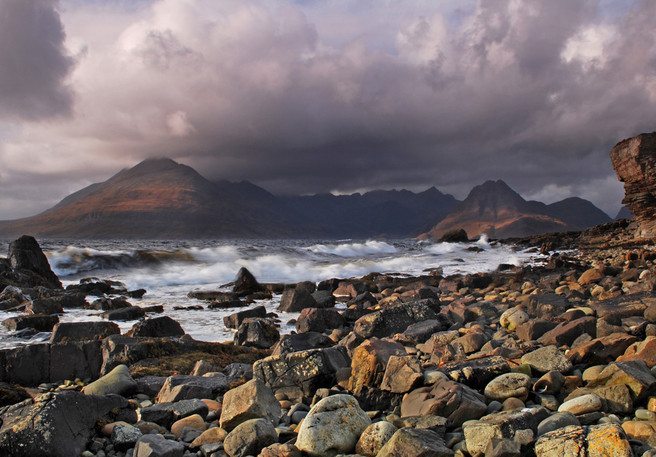 Sometimes it is extremely frustrating trying to hunt out new locations that are easily accessible and I can find myself looking longingly at images of places I would love to visit but won’t be able to. I also occasionally feel annoyed because I can’t join group photographic workshops; they only ever seem to be for the fit and able. Nevertheless, just because I am disabled, that won’t stop my determination to get out, immerse myself in the landscape and take photos. The trick is in interpreting the ambient mood with the relevant techniques and skills I possess and not make it obvious that I have a disability. It is a chance to be free from the pain and stiffness by concentrating on a rewarding and expressive experience. However, the wheelchair has become an essential part of my photographic equipment and my husband not only pushes me, but also carries the tripod whilst I have the camera, lenses and filters. I’m currently working on a project for the Associate level of the RPS and DPS and, fingers crossed, hope to be successful in 2017.
Sometimes it is extremely frustrating trying to hunt out new locations that are easily accessible and I can find myself looking longingly at images of places I would love to visit but won’t be able to. I also occasionally feel annoyed because I can’t join group photographic workshops; they only ever seem to be for the fit and able. Nevertheless, just because I am disabled, that won’t stop my determination to get out, immerse myself in the landscape and take photos. The trick is in interpreting the ambient mood with the relevant techniques and skills I possess and not make it obvious that I have a disability. It is a chance to be free from the pain and stiffness by concentrating on a rewarding and expressive experience. However, the wheelchair has become an essential part of my photographic equipment and my husband not only pushes me, but also carries the tripod whilst I have the camera, lenses and filters. I’m currently working on a project for the Associate level of the RPS and DPS and, fingers crossed, hope to be successful in 2017.

